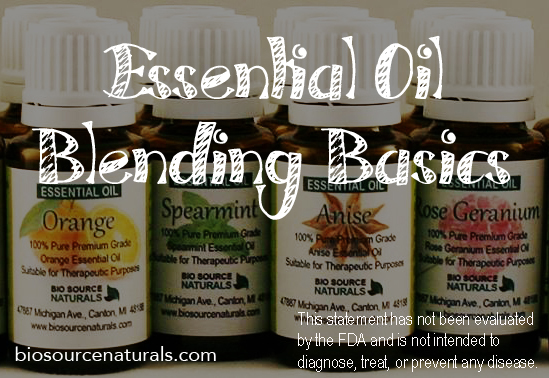Essential Oil Blending Basics
Essential Oil Blending Basics
 Let your creative side come out by making your own essential oil blends! We show you how to begin blending with our review of essential oil blending basics.
Let your creative side come out by making your own essential oil blends! We show you how to begin blending with our review of essential oil blending basics.
In aromatherapy blending, only essential oils; absolutes; CO2’s; whole grain alcohol; carrier oils; herbs; and pure water are used. Keep it natural to retain all the benefits that essential oils provide.*
Essential Oil Categorizing for Blends
Essential oils are generally categorized by smell. There’s citrus (lemon, lime) earthy (vetiver), florals (lavender, jasmine, rose), herbaceous (rosemary, marjoram), medicinal (eucalyptus, tea tree), minty (peppermint), oriental (ginger), spicy (cinnamon, clove), and woodsy (pine, cedar).
Oils within the same category are easy to blend and mix nicely together because they complement each other. Additionally, some categories blend particularly well with other categories. However, don’t be afraid to get creative with your blending because rules are meant to be broken — if you personally like your own creation, then go for it!
Essential Oil Categories That Blend Well Together:
- Floral blends well with spicy, oriental, woodsy, and citrus
- Spicy blends well with florals and oriental
- Minty blends well with citrus, woodsy, herbaceous, and earthy
- Woodsy, herbaceous, and earthy all blend nicely together
- Woodsy usually plays well with all other categories
Top, Middle, and Base Notes to Make Essential Oil Blends
You probably noticed that when you put on perfume or essential oils, after a period of time the scent changes. That’s because certain oils evaporate or are soaked into the skin more quickly than others. The ones that evaporate quickly are called top notes. Then there are middle notes and, finally, base notes. This concept plays a significant role in essential oil blending basics.
Here’s a chart to help you get started with your top, middle, and base notes:
Essential Oil Blending Basics
If you’re a blending novice, it’s a good idea to start by using this breakdown: 30% top notes, 50% middle notes, and 20% base notes.
For your blends, use no more than 5 – 20 drops at most. This way, you can adjust by adding more as you go.
Start the blend with essential oils only, adding carrier oils or alcohol afterward. This way, if you decide you don’t like the blend, you haven’t wasted the carrier oils. Use amber bottles to store your blends. This will help keep them safe from the sun!
Once you’ve created your blend, store it a few days so that the oils can mix and get to know one another. Often, the scent will change slightly, and you might love it more or less.
Basic Recipes
Carrier Oil Perfume
15 – 25 drops of your blend
1 tablespoon of carrier oil (coconut oil, sweet almond oil, jojoba oil, grapeseed oil or other carrier oil)
Blend all oils and always perform a skin patch test first to ensure the blend doesn’t irritate your skin.
Alcohol/Water Base Perfume/Cologne
4 ¼ teaspoons vodka
1 ½ teaspoons distilled water
About 60 drops of your perfume blend
Blend and store for about two weeks, gently shaking the bottle during that time. Then filter (through a coffee filter is just fine) into a new bottle and do a skin test.
Warning
Be careful when blending phototoxic oils and other potent oils.
Read more about essential oils science and scents here.
*This statement has not been evaluated by the FDA and is not intended to diagnose, treat, or prevent any disease.
Purchase our Essential Oil Kits, Carrier Oils, Amber Bottles, and *free* EFT (tapping) Scripts, below:
